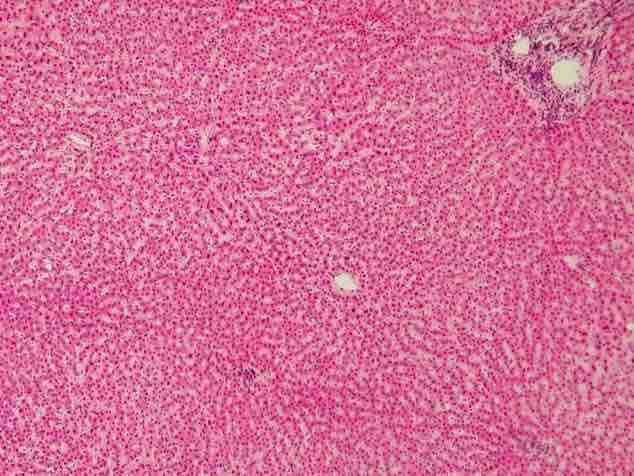The Liver
A hepatocyte is the main tissue cell of the liver, making up 70-80% of the liver's cytoplasmic mass. Hepatocytes contain large amounts of rough endoplasmic reticulum and free ribosomes. Hepatocytes are involved in protein synthesis, protein storage, transformation of carbohydrates, synthesis of cholesterol, bile salts and phospholipids, and detoxification, modification, and excretion of exogenous and endogenous substances. The hepatocyte also initiates formation and secretion of bile. Hepatocytes are organized into plates separated by vascular channels (sinusoids) for blood vessels. The hepatocyte plates are one cell thick in mammals.

Hepatocytes
Cross-section of human liver showing hepatocytes.
Hepatocytes are unique in that they are one of the few types of cell in the human body that are capable of regeneration. Hepatocytes are derived from hepatoblasts, the precursor stem cell of the liver, which divides to produce new hepatocytes. The liver is capable of complete regeneration from as little as 25% of the original organ.